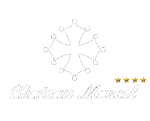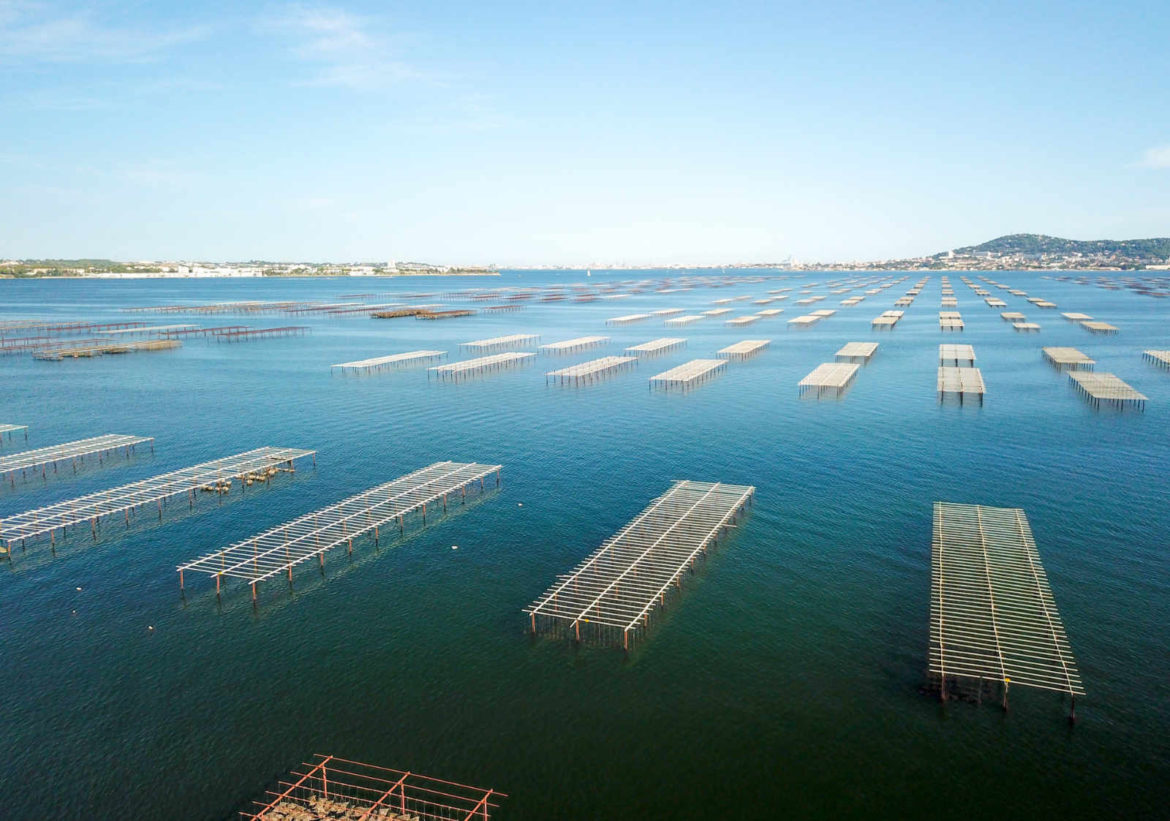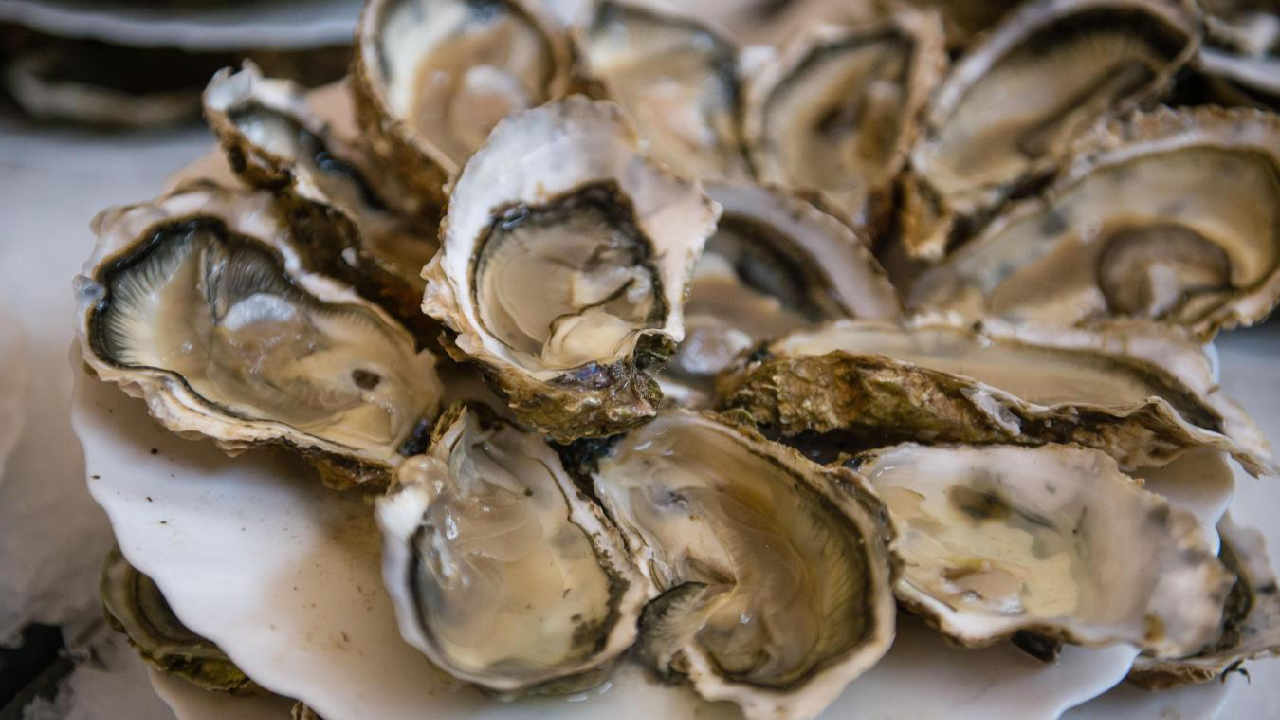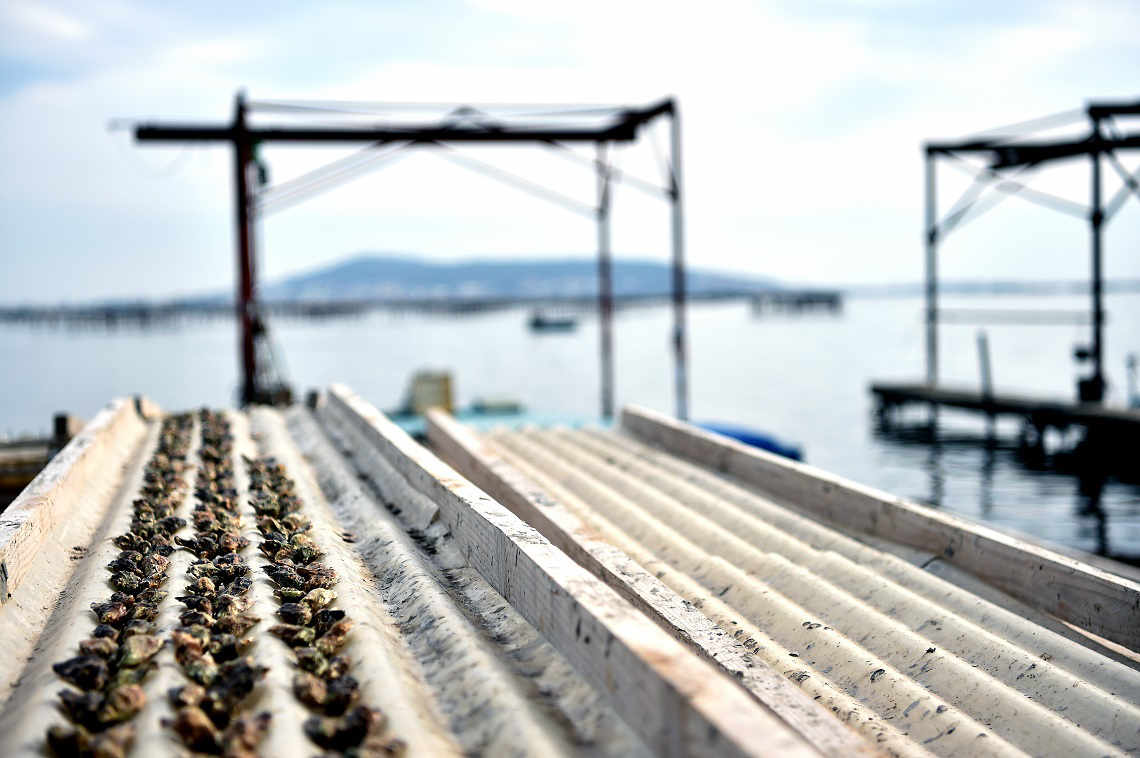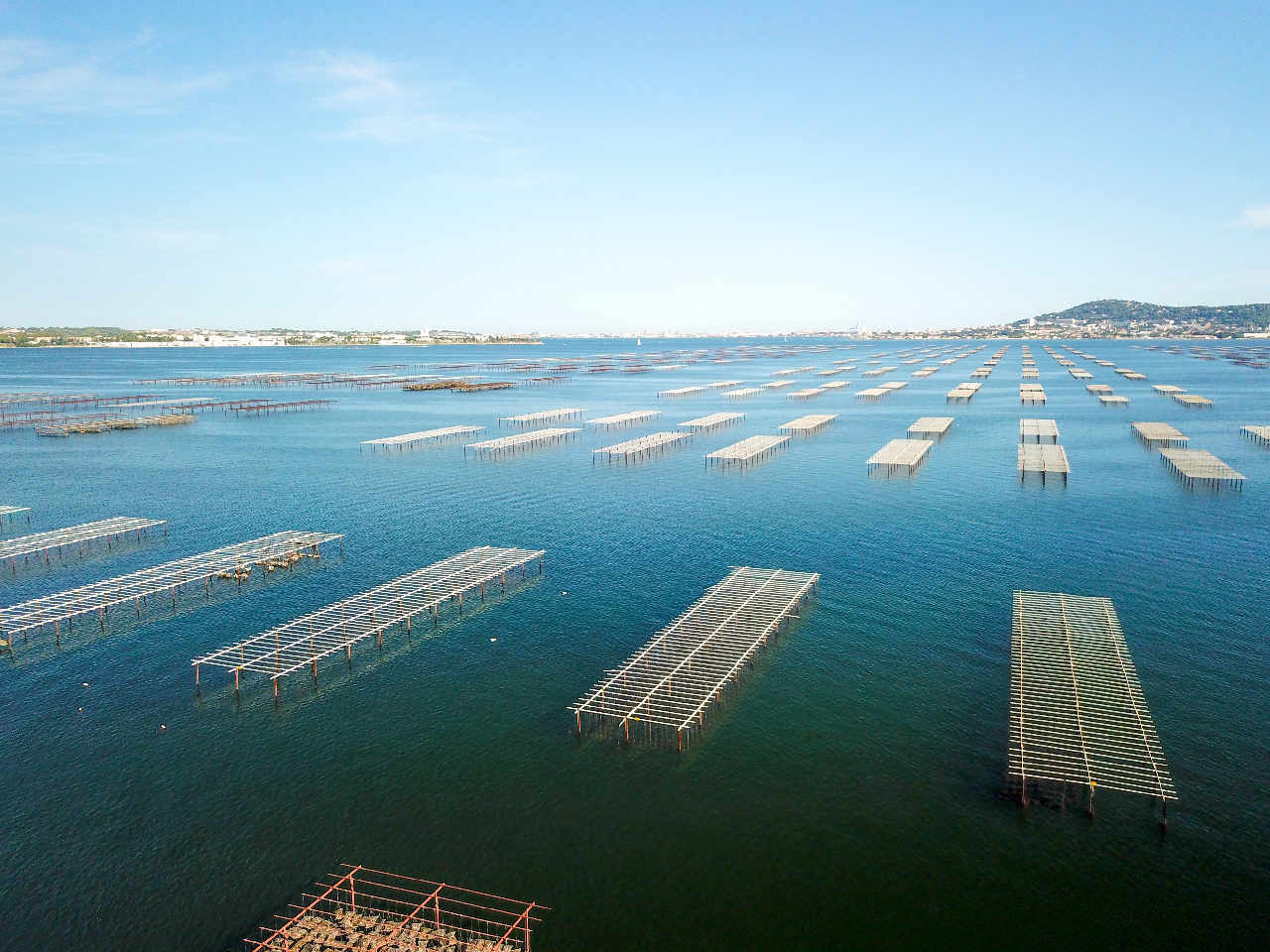Mediterranean shellfish farming was born in Sète in 1875. The absence of tides in the Mediterranean has imposed specific techniques: suspension breeding achieved through “tables” made of rails supporting sleepers and crossed poles.
Today 15% of French oyster production comes from the Etang de Thau. If this hollow variety is called “Bouzigues”, one of the smallest and most charming villages in the Thau basin, it is grown and eaten everywhere in the towns and oyster-farming villages around the pond, like Mèze and Marseillan.
With its marbled shell, very serrated, and iodized freshness enhanced with a hint of hazelnut, “the oyster Bouzigues” is a delight for the palate. Generally consumed raw, it can be tasted au gratin, with snail butter or shallot sauce and white wine.
The mussels of the Thau basin
Mussel culture preceded oyster farming. Nearly 3000 tonnes of Mediterranean mussels are produced each year in the Thau basin.
It is a special species, called Mytilus Galloprovincialis. Raised from spat harvested at sea, this “seed” is put into a “Marseille” rope, that is to say placed in a double cotton net and immersed in deep water.
The shells take about 12 months to reach a suitable size. Larger and more fleshy than the mussels of the ocean, they have a beautiful bright color and a strong iodized taste.
They are eaten raw or cooked, in marinière, or brasucade, according to the taste, and for bigger ones, of course, one stuffs them “with Sète”.
